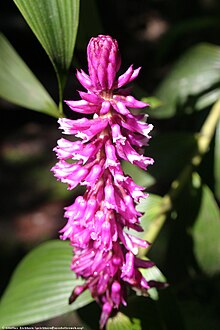
Paranthropus is a genus of extinct hominin which contains two widely accepted species: P. robustus and P. boisei. However, the validity of Paranthropus is contested, and it is sometimes considered to be synonymous with Australopithecus. They are also referred to as the robust australopithecines. They lived between approximately 2.9 and 1.2 million years ago (mya) from the end of the Pliocene to the Middle Pleistocene.

Atracidae is a family of mygalomorph spiders, commonly known as Australian funnel-web spiders or atracids. It has been included as a subfamily of the Hexathelidae, but is now recognised as a separate family. All members of the family are native to Australia. Atracidae consists of three genera: Atrax, Hadronyche, and Illawarra, comprising 35 species. Some members of the family produce venom that is dangerous to humans, and bites by spiders of six of the species have caused severe injuries to victims. The bites of the Sydney funnel-web spider and northern tree-dwelling funnel-web spider are potentially deadly, but no fatalities have occurred since the introduction of modern first-aid techniques and antivenom.

The Phascolarctidae is a family of marsupials of the order Diprotodontia, consisting of only one extant species, the koala, and six well-known fossil species, with another six less well known fossil species, and two fossil species of the genus Koobor, whose taxonomy is debatable but are placed in this group. The closest relatives of the Phascolarctidae are the wombats, which comprise the family Vombatidae.

Ferocactus is a genus of large barrel-shaped cacti, mostly with large spines and small flowers. There are about 30 species included in the genus. They are found in the southwestern United States and northwestern Mexico.
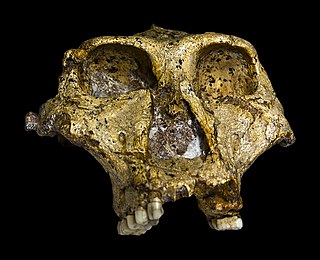
Paranthropus robustus is a species of robust australopithecine from the Early and possibly Middle Pleistocene of the Cradle of Humankind, South Africa, about 2.27 to 0.87 million years ago. It has been identified in Kromdraai, Swartkrans, Sterkfontein, Gondolin, Cooper's, and Drimolen Caves. Discovered in 1938, it was among the first early hominins described, and became the type species for the genus Paranthropus. However, it has been argued by some that Paranthropus is an invalid grouping and synonymous with Australopithecus, so the species is also often classified as Australopithecus robustus.

Paranthropus boisei is a species of australopithecine from the Early Pleistocene of East Africa about 2.5 to 1.15 million years ago. The holotype specimen, OH 5, was discovered by palaeoanthropologist Mary Leakey in 1959 at Olduvai Gorge, Tanzania and described by her husband Louis a month later. It was originally placed into its own genus as "Zinjanthropus boisei", but is now relegated to Paranthropus along with other robust australopithecines. However, it is also argued that Paranthropus is an invalid grouping and synonymous with Australopithecus, so the species is also often classified as Australopithecus boisei.

Zalmoxes is a genus of rhabdodontid ornithopod dinosaur from the Maastrichtian age of the Late Cretaceous in what is now Romania. The genus is known from specimens first named as the species Mochlodon robustum in 1899 by Franz Nopcsa before being reclassified as Rhabdodon robustum by him in 1915. In 1990, this name was corrected to Rhabdodon robustus by George Olshevsky and, in 2003, the species was once more reclassified as the type species Zalmoxes robustus. Zalmoxes refers to the Dacian deity Zalmoxis and robustus refers to the robustness of the remains. Also in 2003, another species was named, Zalmoxes shqiperorum, named for the Albanian name for Albanians.

Eremurus robustus, the foxtail lily or giant desert candle, is a species of flowering plant in the asphodel family, native to the Tien Shan and Pamir Mountains in Central Asia, that is often used as an ornamental plant.

Zephyranthes robusta, commonly known as the Brazilian copperlily, pink fairy lily or the pink rain lily, is a species of herbaceous flowering bulb in the family Amaryllidaceae. It is native to Brazil, Argentina and Uruguay, but is now naturalized in Florida, Colombia, South Africa, and Mauritius.

Astylosternus is a genus of frogs in the family Arthroleptidae. It contains 12 species found in an area spanning from Sierra Leone in West Africa to the Democratic Republic of Congo in Central Africa, with a gap in the region of Ghana.
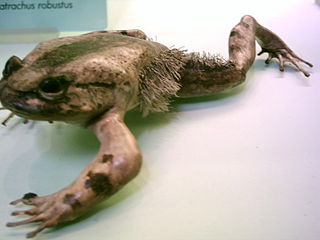
The hairy frog also known as the horror frog or Wolverine frog, is a Central African species of frog in the family Arthroleptidae. It is typically considered monotypic within the genus Trichobatrachus, but based on its genetics, it should be included in Astylosternus instead. Its common name refers to the somewhat hair-like structures on the body and thighs of the breeding male.
Habranthus (copperlily) was a formerly recognized genus of tender herbaceous flowering bulbs in the subfamily Amaryllidoideae of the family Amaryllidaceae. It is now included within a more broadly circumscribed genus Zephyranthes. The genus was first identified by pioneering bulb enthusiast William Herbert in 1824.

Elleanthus is a genus of flowering plants from the orchid family, Orchidaceae. They are commonly known as tiger orchid. All the species are native to the warmer parts of the Western Hemisphere.
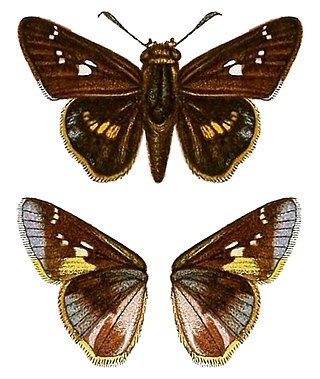
Platylesches robustus, the robust hopper or large hopper, is a butterfly of the family Hesperiidae. It is found in Zululand, Eswatini, Transvaal, Mozambique and Zimbabwe. The habitat consists of moist, frost-free savanna and the transitional zone between forest and Guinea savanna.

Bolboschoenus robustus is a species of flowering plant in the sedge family. It is known by many common names: saltmarsh bulrush, alkali bulrush, sturdy bulrush, seacoast bulrush, stout bulrush, three-cornered sedge or leafy three-cornered sedge, and seaside club-rush.

Ferocactus robustus is a barrel cactus in the genus Ferocactus of the family Cactaceae.
Phrynotettix robustus, known generally as the robust toad lubber or robust toad hopper, is a species of lubber grasshopper in the family Romaleidae. It is found in North America.
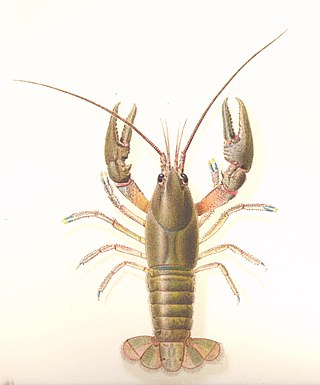
Cambarus robustus, known generally as the robust crayfish or Big Water crayfish, is a species of crayfish in the family Cambaridae. It is found in North America.

Ellianthus aurantiacus is an orchid native from Costa Rica to Peru. It is unique among orchids in being a shrub with repeated orders of branching. The plant gets about three feet in height and not quite as wide.

Elleanthus tricallosus is a species of flowering plant within the orchid family.
